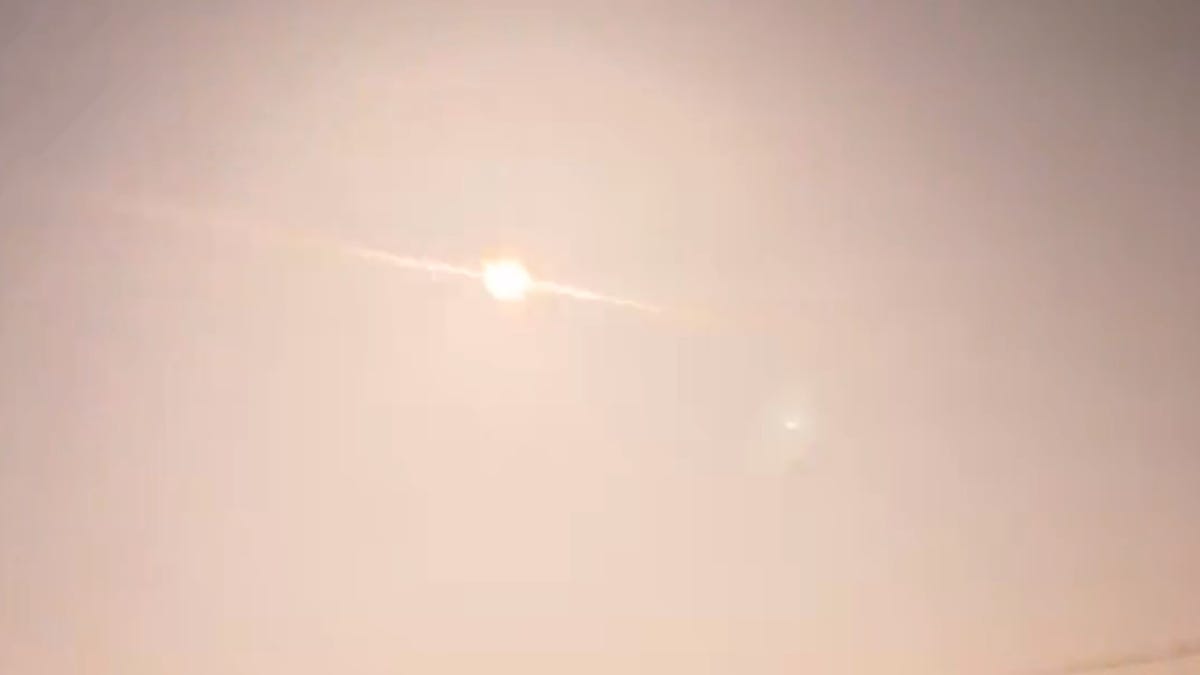
The fireball as seen at its brightest above France.
Twitter @MegaLuigi video screenshot by Eric Mack/CNET
It may be one of the most widely observed space rocks no one knew existed just a day earlier. An asteroid officially designated 2023 CX1 (it also went by the temporary label Sar2667 during its approach toward Earth) was discovered Sunday evening by an observatory in Hungary and seven hours later could be spotted burning up as a brilliant fireball over the English Channel before a potential audience of millions.
This marks just the seventh time ever that a meteoroid has actually been spotted in space before it impacted the atmosphere, according to the European Space Agency. The tiny size of the mini bolide — it was just one meter across at the time of discovery — makes the feat all the more impressive. It was first spotted by Krisztián Sárneczky at the Piszkéstető Observatory, who also made a similar discovery of asteroid 2022 EB5 last year just before it met its own demise in our atmosphere.
Its small size also practically ensures that it poses no real threat to anyone on the ground, as all but the tiniest bits surely burned up well before reaching the surface.
In the seven hours that elapsed between Sárneczky’s original find and impact, observatories around the world swung into action trying to get a glimpse of the imminent impactor and refining its trajectory. A second observation just 40 minutes later confirmed the discovery wasn’t a false positive and then several more pinpointed the moment and location it would impact the upper atmosphere: right over the English Channel in the early morning hours.
The predictions turned out to be dead on and 2023 CX1 did not disappoint, lighting up the predawn skies over France, Belgium, the Netherlands, the UK and as far off as Germany.
Got It! How beautiful! #Sar2667 #Asteroid pic.twitter.com/tpLQkJpcCv
— Kade 🧑🏻🔬🌌 (@KadeFlowers) February 13, 2023
#Sar2667 depuis Rouen c’est énorme !
Super lumineux ! pic.twitter.com/PMArwXHh5t— MegaLuigi 💬 (@MegaLuigi) February 13, 2023
“It is likely that some fragments of the meteoroid may have survived the atmospheric pass and fell somewhere onshore close to the coast north of Rouen, in Normandy, France,” the ESA wrote in a statement Monday.
It’s becoming clear that we are entering a new era when it comes to spotting and tracking small asteroids and other near-Earth objects, especially when they’re on a collision course with our planet. The last time astronomers caught one just hours in advance of impact was November, this time over the Great Lakes and even smaller than 2023 CX1.
The other handful of imminent impactors were seen in 2019, 2018, 2014 and 2008, so this is a relatively newly acquired superpower for humans to be able to spot even the smallest inbound bit of cosmic detritus.
The ESA credits new sky-scanning observatories like the South Africa-based Meerkat facility and other eyes on the near-Earth environment for the boost in discoveries.
In addition to providing a little bit more confidence in our planetary protection capabilities, it also amounts to an improving alert system for night sky watchers who no longer have to depend on total randomness to catch a stray fireball in the night sky.
